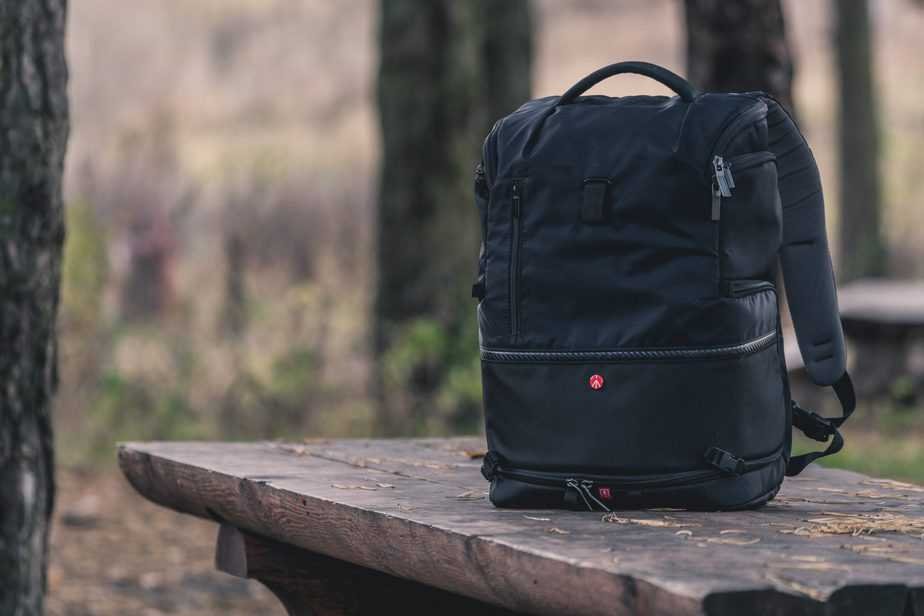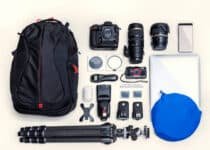What Is The Standard Size of a Backpack? A Comprehensive Guide
A backpack is a portable bag with shoulder straps used to carry personal belongings, such as books, clothes, or equipment, while on the go. The size of a backpack can vary widely, depending on the intended use and the items it is designed to carry. However, there are some general guidelines for determining the standard size of a backpack.
In general, a backpack for everyday use or school should be able to hold a laptop, textbooks, and other essentials and should have a capacity of around 20-30 liters. A giant backpack, with a total of 40 litess or more, may be suitable for long trips or carrying more gear, such as camping or sports gear.
Ultimately, What is the Standard size of a backpack will depend on the specific needs and preferences of the user.
What is a Good Size for an Everyday Backpack? Step by Step
When choosing the size of an everyday backpack, there are a few factors to consider:
- The amount of stuff you need to carry: Consider what you’ll use in the backpack daily. Do you need to have a few essentials, or do you need to pack more substantial items, like a laptop or books?
- Your personal size and comfort level: A giant backpack may be necessary if you need to carry more items, but be sure to choose a size that is comfortable for you to wear. If the bag is too large or heavy, it could cause discomfort or strain your back and shoulders.
- The type of activities you’ll be doing: If you use the backpack for outdoor activities, you may want a larger size to fit more gear. A smaller size may be more practical if you mainly use it for everyday commuting.
In general, a good size for an everyday backpack can fit all your daily essentials while still being comfortable. A bag with around 20-30 litres capacity is a good starting point for most people.
What Is The Standard Size of a Backpack? Detailed Guide
Determine the intended use:
- If the backpack will be used for everyday purposes, such as carrying a laptop and textbooks to school or work, a capacity of 20-30 litres is generally sufficient.
- For longer trips or carrying more gear, such as camping equipment or sports gear, a larger capacity of 40 liters or more may be necessary.
- For specific activities, like hiking or backpacking. These backpacks often have a larger capacity and additional features, such as a frame or hip belt, to help distribute the weight of the load more evenly.
Consider the items that will be carried:
- Consider the size and weight of the items carried in the backpack. A larger capacity may be necessary for bulky or heavy items.
- Consider the number of items that will be carried. A backpack with more pockets or compartments can keep things organized and make it easier to access specific items.
Think about the length of the trip:
- For short trips or daily use, a smaller capacity may be sufficient.
- For longer trips or extended use, a larger capacity may be more appropriate to allow for additional items and avoid leaving anything behind.
Personal preferences:
- Some people may prefer a more giant backpack for added storage space, while others may prefer a smaller, more compact gear for ease of movement.
- Consider the style of the backpack. Some people prefer a more traditional, simple design, while others prefer a more modern, stylish look.
Why is Size of Backpack Important?
The size of a backpack is important for a number of reasons. Here are a few:
1- Comfort:
A backpack that is too large or small can be uncomfortable to wear. A bag that is too large may be too heavy or not fit properly, causing strain on the shoulders and back. A backpack that is too small may be unable to hold all necessary items, leading to overloading and discomfort.
Choosing the right size backpack can help ensure that the weight is evenly distributed and fits appropriately, leading to a more comfortable experience.
2-Capacity:
The size of a backpack determines how much it can hold. A more giant load will have more room for items, while a smaller bag will have less. Choosing a backpack with the suitable capacity is vital to ensure it can hold all necessary items without being overstuffed or undercooked.
3-Convenience:
A backpack that is too large may be cumbersome and challenging to manoeuvre, while a pack that is too small may only be able to hold some of the necessary items. Choosing the right size backpack can help ensure that it is easy to carry and use and that all the required things can be easily accessed.
4-Durability:
A backpack that is too large or too small may be more prone to wear and tear. A bag that is too large may be overloaded, leading to strain on the materials and seams. A smaller backpack may be overstuffed, leading to the same issue.
How do I know my backpack size?
There are a few ways to determine the size of your backpack:
Look at the product specifications:
Many backpacks will have size information listed in the product specifications or packaging. This is often given in inches or liters.
Measure the dimensions of your backpack:
You can use a tape measure to measure your backpack’s length, width, and depth. This will give you an idea of the backpack size in inches or centimeters.
Consider the capacity:
TThe capacity of a backpack is usually given in litres. This measures how much the pack can hold in terms of volume. A giant capacity backpack will generally be more significant.
Think about the items you need to carry:
Consider the items you will carry in your backpack and whether the backpack size suits your needs. For example, opt for a giant bag if you need to carry many heavy things.
Try it on:
If you have the opportunity, try the backpack on to see how it fits and whether it is comfortable to carry. This can help you determine whether the gear size is right for you.
How To Measure Backpack Dimensions?
To measure the dimensions of a backpack, follow these steps:
- Place the backpack on a flat surface.
- Measure the width of the backpack from the widest point (usually the bottom) from left to right.
- Measure the height of the backpack from the bottom to the highest point (usually the top of the back panel or the top of the shoulder straps).
- Measure the depth of the backpack by measuring the distance from the front of the backpack to the back of the backpack.
Conclusion:
In conclusion, the standard size of a backpack can vary widely depending on the intended use and the items it is designed to carry. A bag for everyday use or school should have a capacity of around 20-30 liters, while a giant backpack with 40 liters or more may be suitable for long trips or carrying more gear.
The right backpack size will depend on the specific needs and preferences of the user. It is essential to consider the intended use, the items that will be carried, the length of the trip, and personal preferences when choosing a backpack to ensure that you get the right size for your needs.
FAQs:
What size is a medium backpack?
A medium size backpack generally has a capacity of around 30-50 liters. This size is suitable for carrying a moderate amount of gear or supplies for shorter trips or for everyday use.
How big a backpack can I hand carry?
A backpack you can carry should be small enough to fit comfortably under your aeroplane or train seat or in the overhead compartment.
A backpack with a capacity of 20-35 liters is generally considered a good size for hand carry. However, this will depend on the specific dimensions of the backpack and the size of your items. It’s essential to check the carry-on size restrictions of the airline or transportation company you will be travelling with to ensure your backpack meets their requirements.
What size backpack is too big?
A backpack that is too big may have a capacity of 50 liters or more. This size may be too large for everyday use or shorter trips and may be more suitable for extended trips or carrying a large amount of gear. A too-big backpack may also be cumbersome, challenging to manoeuvre and more prone to wear and tear due to overloading.
Should my backpack touch my back?
Ideally, a backpack should not touch your back when it is properly fitted. The shoulder straps should be adjusted to the proper length so that the load sits comfortably on your hips, with the weight evenly distributed across your back. A backpack that touches your back may not be fitted appropriately and may cause discomfort or strain on your shoulders and back.
What is the standard backpack size for men?
The standard backpack size for men varies depending on the purpose and personal preference. However, a typical size range for men’s backpacks is between 20 to 40 liters. This size can accommodate everyday essentials such as laptops, books, and other belongings. It’s important to consider your specific needs and activities when choosing a backpack size.



